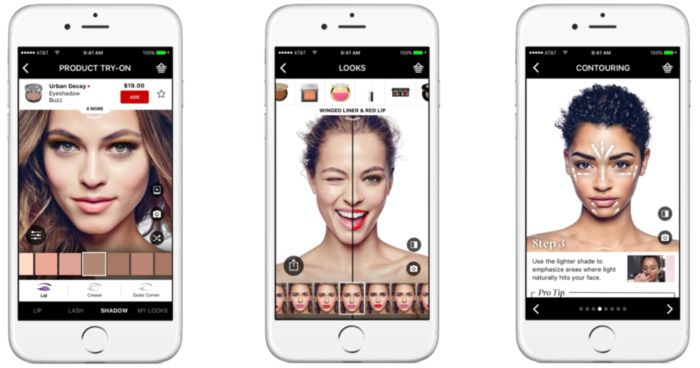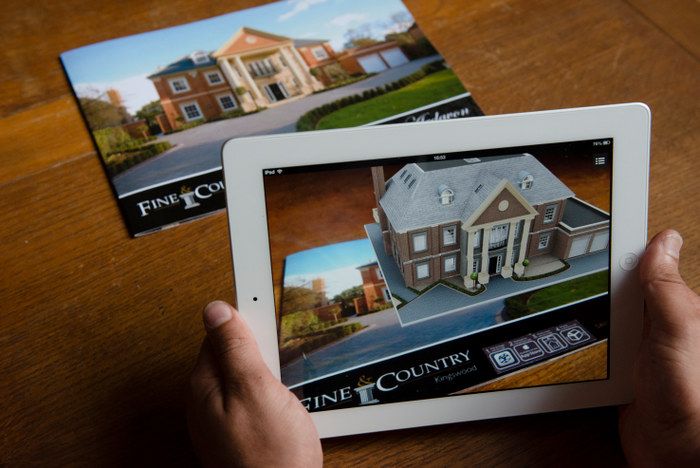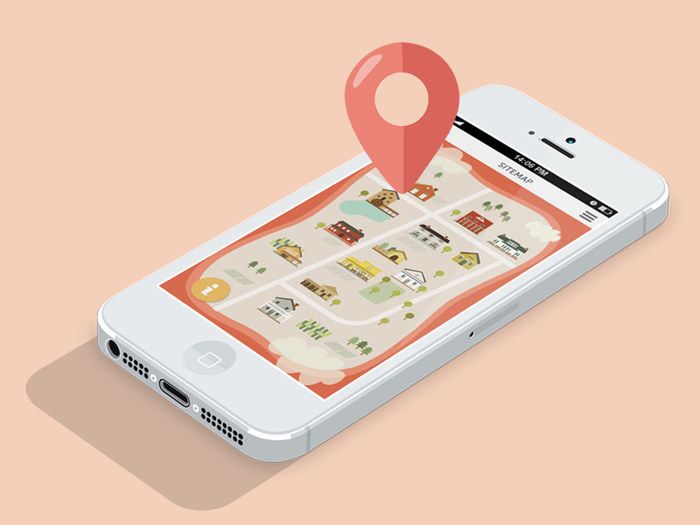How to Create an Augmented Reality App?
Published: May 2, 2022
11 min read
In this article, you'll learn:
1
📈 Top Industries Which Can Benefit From Augmented Reality App Development
2
📱 Main Types of Augmented Reality Apps
3
🤔 How to choose the right AR SDK?
4
🥇 Top 3 AR app development SDKs
5
💡 Takeaways
After the overwhelming success of Pokemon GO (which has become so popular exactly due to the AR element of the app), it’s totally clear that augmented reality is going to be the next big mobile trend. So today we’re going to reveal the most thrilling insights of the augmented reality app development!
We all remember Apple’s special event at the Steve Jobs Theater on the 12th of September. The headliners of the presentations were iPhone X and the brand-new iOS 11. The last one not only changed the interface and introduced some new features but also added the support for AR apps created with ARKit and Apple’s new framework for augmented reality mobile app development.
If you don’t believe that the industry is going to skyrocket, take a look at this data by Statista:

Global revenue of the consumer mobile augmented reality app market
As you can see, from 2016 to 2022 the market is going to grow by 2136%. Impressive, isn’t it?
Another great piece of news is that the gaming industry isn’t the only one to benefit from AR app development. Which are the others? Let’s discover them now!
📈 Top Industries Which Can Benefit From Augmented Reality App Development
We’ve already mentioned the stunning success of the Pokemon GO app. Let’s be honest, it’s pointless to argue: the gaming industry really seems to be a leader in the augmented reality mobile app development. Yet, there are far more examples of popular AR apps. For example, they can help you to:
- enhance the UX;
- increase engagement with your mobile application;
- establish a new way to present your products and services.
Let’s briefly review how you can develop an augmented reality app and use it in different industries except for the gaming one.
Retail 🛍️
Retail industry may be the one to benefit the most from AR app development and many famous brands already took the advantage.
For example, the IKEA Place app used all the potential of augmented reality to let users virtually place furniture and check how it may look once assembled. Developers say that it should be as much as 98% accurate in scale and dynamically react to shade and light. The aim of the app is to increase sales and help customers to make more informed decisions. Here is a short & beautiful video that shows us how the things work:
**
**
Sephora is another brand that uses AR technologies to boost sales. The app allows users to try different products with help of the front-facing camera. Meanwhile, it also serves as a great tool for increasing engagement and activity of users.

Sephora app
Education 📚
Education apps are pretty popular among users of younger generations so implementing such an innovative technology as AR is definitely a “win-win” situation. Kids are the main target audience of such applications, and we all know how they enjoy the interactive content.
Such apps may be used by teachers (take Anatomy 4D as an example) or kids on their own (for example, FETCH! Lunch Rush is both entertaining and educational app for children).
Real Estate 🏘️
Today AR is used in the real estate industry for almost the same purposes as in the retail one – to increase sales and improve UX. And it’s doing pretty well, though.
We know that Augmented Reality technology is going to change how people search and view property, – Realestate.com.au’s CEO, Tracey Fellows
The main reason for agencies to build an augmented reality app lies in the ability to showcase 3D models of buildings, apartments and properties. This works as a huge time saver for both buyers and agents and thus helps to optimize working processes in the industry.

An example of a real estate AR app
Entertainment 😄
AR application development can be also used for creating entertainment apps to increase engagement. Take a look at Snapchat. Augmented reality in this app doesn’t have any deep sense but make interactions more funny and catchy.

AR technologies in the Snapchat app
Healthcare 💊
It’s not a secret that healthcare is one of the industries which were significantly changed by the mobile technologies. And augmented reality app development offers brand new possibilities that are going to improve the quality of medical services.
For example, you can make an AR app to showcase the possible consequences of the procedure to the patient, display internal processes and symptoms. And, of course, such an app can also serve for educational purposes as well.
Example: the series of Orca Health apps.
Manufacture 🏭
Your Android or iPhone augmented reality app may be not targeted at the mass market but be developed for the internal use. With its help you can improve the performance and productivity in the following fields:
- Complex Assembly.
- Maintenance.
- Expert Support.
- Quality Assurance.
Here is a cool example of how it works in the real life that we just had to share with you:
**
**
As you can see, the potential of developing an augmented reality Android application (or iOS one, it doesn’t really matter) is really huge. Yet, first and foremost, you should define which type of AR apps will perfectly suit your idea. So that’s what we’re going to talk about now!
📱 Main Types of Augmented Reality Apps
Augmented reality app developers usually choose between 2 main types of AR mobile applications – marker-based and location-based. Let’s review them more carefully.
Marker-based apps
This kind of mobile applications is based on the image recognition feature. To run the AR technology, the app should recognize some specific patterns using a camera. It can be almost anything – some image, QR code, or even 3D-markers (for example, the real-life object like on the video above).
As soon as the pattern is detected, it’s overlayed with the augmented reality object. The position, orientation and all other characteristics depend on this marker.

This group of apps requires special markers to work (image by Lukáš Straňák)
Location-based apps
This group of applications doesn’t need any markers to work. Along with a camera, they rely on different detectors (GPS, digital compasses, accelerometers and so on) to establish your location and position. After that, they place augmented reality objects.
The most famous representative of the group is, no doubt, Pokemon GO. Or the IKEA Place app that we have also mentioned today.

Location-based apps rely not on markers but on detectors of user's device (image by Nazar Lenyshyn)
The next step that you (or your augmented reality app developers) should take is to choose the most suitable and appropriate development kit. What should you pay attention to? Read on to find out!
🤔 How to choose the right AR SDK?
The list of available SDKs is pretty long, so choosing the most appropriate one may be a tricky task. Our Stormotion team offers you to consider the following criteria when selecting a development kit for your augmented reality app development. Also, the tools that you choose will directly influence your augmented reality app development cost.
# 1: The type of license
We all know that money-related issues are almost always extremely important for entrepreneurs. The range of possible solutions is very broad: some SDKs are completely free to use, while others require you either to pay a one-time fee or purchase monthly/yearly subscription.
Prices may also significantly vary. For example, while Wikitude’s cloud subscription costs 4490 €/yr, Vuforia’s one is $99 per month (so about $1200 a year). However, every company offers a free license that you can try before purchasing a more advanced subscription.
# 2: Supported platforms
Usually, almost all companies that offer AR SDKs support both Android and iOS platforms. However, 2 things that you should pay attention to are:
- famous Apple’s ARKit doesn’t support Android (quite expectedly, huh?);
- if you are planning to make an AR app for another platform (for example, for Windows Mobile or macOS), make sure that the chosen SDK supports it.
# 3: Cloud recognition | On-device recognition
If you are going to build a marker-based Android or iPhone augmented reality app, then support for cloud services should mean a lot to you. It allows to store markers in the cloud instead of mobile devices and, thus, reduce the size of apps. On the other hand, to access these markers users have to go online.

Cloud recognition allows to save a lot of space on users' devices (image by Gal Shir)
Yet, for small AR apps that don’t need to store a lot of different markers, local recognition (means they are stored on users’ devices) is a good option to choose. Moreover, this type of recognition allows users to use the app without an Internet connection.
# 4: 3D tracking
3D tracking support is another vital part of marker-based AR apps. It allows recognizing three-dimensional real-life objects like boxes, furniture and more. Do you remember the video that we showed you while talking about the manufacturing industry? That’s the vivid example of 3D tracking in action!
# 5: Smart glasses support
The popularity of smart glasses only grows from year to year. They offer users unique hands-free experience so the potential of combining them with AR technologies is really great.
So if you want to take an advantage of these gadgets and make your Android/iOS augmented reality app compatible with smart glasses in the future, you should check whether the SDK supports this feature.
# 6: Geolocation
As you might guess, geolocation services are essential for developing location-based augmented reality iOS/Android applications. They are necessary to add virtual points of interest.

Geolocation is essential for location-based AR apps (image by Ann Lu)
Do you remember PokeStops in the Pokemon GO app? That’s how augmented reality app developers implemented the geolocation feature in the game app. Yet, its potential isn’t limited only by the gaming industry. For example, retailers may use the geolocation feature to guide users to nearest stores.
# 7: SLAM
SLAM – Simultaneous Localization and Mapping – is another important feature that you may need during your augmented reality mobile app development. This technology allows the app to understand the surroundings (not only a floor but walls and other objects in the room) to make sure that your AR object looks as natural as possible. This also helps to keep the virtual object in the same position even if you’re moving or looking at it from a different angle.
These were 7 major criteria that you’d better consider when choosing a development kit to build an augmented reality app. So as to help you, we also decided to review 3 SDKs that, in our opinion, deserve your attention.
🥇 Top 3 AR app development SDKs
Apple ARKit
ARKits is the official AR SDK by Apple that became available for the last iOS 11. As we have already mentioned, it allows to build an augmented reality apps only for Apple devices, so if you want to cover both platforms this tool isn’t the best one for you.
Moreover, this development kit only works with Apple A9 CPU and higher. This means that the AR functionality will be available for devices which were manufactured after 2015.
What is the good news?
- First of all, it’s completely free so you don’t have to spend even a penny to build a really great iPad or iPhone augmented reality app.
- Secondly, the kit supports all the functionality that we mentioned in the previous paragraph, including geolocation, SLAM, cloud recognition, smart glasses support and other.
Vuforia
This development kit is also pretty popular among developers. The tool provides a wide range of functionality and can be used for creating apps for three platforms (iOS, Android and Windows Phone) and different industries. Vuforia’s case studies include healthcare, industrial, educational, gaming and other mobile applications.
The cost to develop an AR app using Vuforia may be different. As of December 2017, the company offers:
- free (but quite limited) license;
- classic $499 one-time license;
- a cloud one for $99 a month.
This SDK supports all the features from our list except SLAM.
Wikitude
Wikitude is often considered as one of the top tools for developing augmented reality Android and iOS applications. That’s why Wikitude’s showcases include apps for UEFA, TIME magazine, The Washington Post, Rio Olympic Games, TripAdvisor and many other famous brands.
As you may expect, Wikitude SDK supports all the features from the previous paragraph. So it’s pretty easy to develop both marker- and location-based AR apps.
However, this tool is the most expensive one. Despite you are provided with a free trial, AR app development cost using the commercial license starts from 2490 € per year or from 1990 € as a one-time fee.
💡 Takeaways
As you can see, AR development has a great potential for many industries. This technology can significantly improve the UX, increase user engagement and establish an innovative way to present products and communicate with the audience.
The cost to develop an AR app, as well as the final result, greatly depends on the development kit that you are going to choose. You should pay attention to 7 main criteria when selecting one:
- type and price of license;
- range of supported platforms;
- cloud recognition | on-device recognition;
- 3D tracking;
- smart glasses support;
- geolocation feature;
- SLAM.
Any questions left? Drop us a line and our tech-team from the Stormotion HeadQuarter will help with your AR development challenge!
Was it helpful?
Read also

How to Create a Fitness App: Process, Costs, Estimates and Challenges

What is Prototyping in IoT and Some Practical Advice

What is IoT Device Management?
Our clients say
![Stormotion client Alexander Wolff, CPO from [object Object]](/static/a16ba3c9580effc3ab9a68d115eadffe/b0e74/alex.png)
When I was working with Stormotion, I forgot they were an external agency. They put such effort into my product it might as well have been their own. I’ve never worked with such a client-focused company before.
Alexander Wolff, CPO
Sjut
